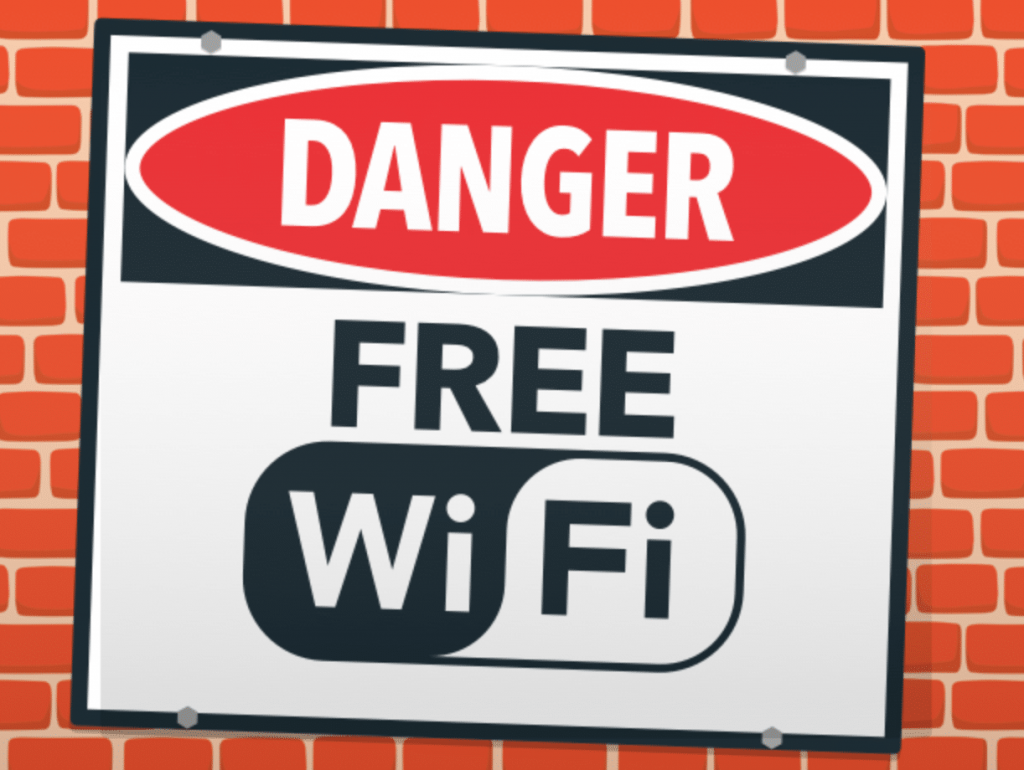We are living in a connected world where public WiFi networks are everywhere around us! it’s rare not to find free WiFi in coffee shops, restaurants, hotels, airports, malls, and nearly every business.
If you work or spend much time in coffee shops, you will notice that most people ask for the WiFi password the moment they sit in even before making their order.
It’s well understood that everybody loves free internet but what are the dangers of free public WiFi networks?
What are the risks of using Public WiFi?
Whether the WiFi network is secured or unsecured, it’s not safe when any person can ask for the password because. Even worse, some Public WiFi networks leave their router exposed, letting any connected user gain admin access to the router, add some bad intentions and you could be under an attack.
In this unsafe network environment, your network traffic can be monitored, packets sniffed, and you will probably notice an increased amount of suspicious pop-ups in your browser or redirections to phishing pages.
Let us talk about some of the methods used in network attacks:
Evil Twin Attack
It’s a malicious WiFi network with a similar name to the Public WiFi, created by the attacker to lure unsuspected users to join it. When the victim connects to the malicious network, the attacker can have direct access to the victim’s computer.
So, make sure you double-check that network name before joining, you don’t know where you might end up.
Man-in-the-middle attacks
This is an interesting one, it’s when the attacker manages to put himself between you and the server you’re communicating with. So, instead of communicating directly with the server, the packets you send or receive from the server pass through the attacker who can alter these packets.
This attack usually targets the communication between the victim and the DNS server, so when the victim types a web page address, the attacker intercepts the DNS server response before it reaches you, alters it, and you end up at the attacker’s server.
Since the attacker can monitor all the victim’s traffic, it’s possible to access every piece of information the victim is sending, such as credit card details, passwords, or important data.
Malware Distribution
Malware distribution or injection is when the attacker intercepts a web server response before it reaches the victim, manipulates it, inserts some hidden code in to run on the victim’s device.
How to Stay Safe While Using Public WiFi
It’s simple, use a VPN
It’s the best, easiest, and most convenient way to protect yourself online, whether you’re on a public WiFi or an unsecured network. When you connect to a VPN server, an encrypted tunnel is created for all your traffic. This will prevent any attacks because even if the attacker intercepts your data, it’s encrypted data, they won’t be able to see any of it which is enough to avoid the risks of public WiFi networks.
If you don’t already have VPN, we recommend you to try bVPN, it’s one of the best VPNs in the market and it will ensure that your traffic is well encrypted without sacrificing the speed, plus you can use it on up to 6 devices at the same time.
bVPN lets you try before you buy, just download the app on your device, install it, and click “Connect”. No registration is required.
bVPN is available on Android, iOS, macOS, Windows, and Linux.


